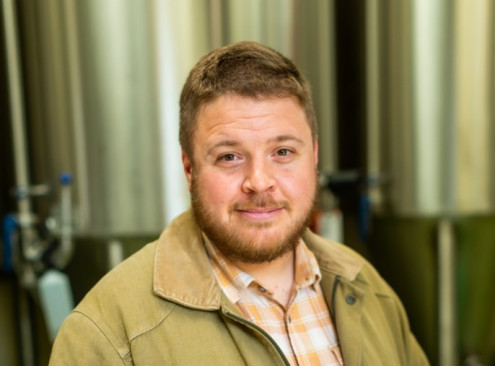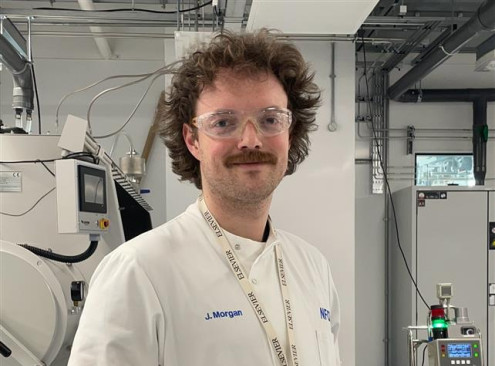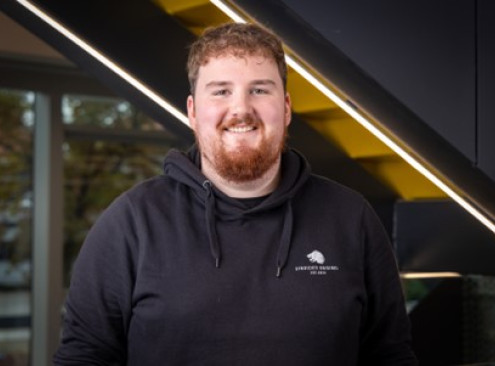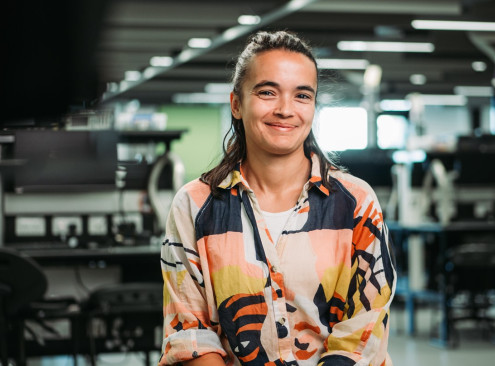© Pint of Science, 2025. All rights reserved.
Join us for the launch event – a 'sip of science' – to kick off the Manchester Pint of Science Festival, happening from May 19th to 21st, 2025.
Experience a series of captivating flash talks covering a variety of themes, showcasing some of Manchester's brightest minds and groundbreaking research. Don't miss out on this inspiring preview of what's to come!
For accessibility requirements or questions, please contact [email protected]
Experience a series of captivating flash talks covering a variety of themes, showcasing some of Manchester's brightest minds and groundbreaking research. Don't miss out on this inspiring preview of what's to come!
For accessibility requirements or questions, please contact [email protected]
Decarbonising your Local Pint
Tim Bloomer
(Cofounder and Sustainability Director)
Tim Bloomer is Co-Founder and Sustainability Director at Fell Brewery and Bars. Based on the Cartmel Peninsula in South Cumbria, Fell has grown from Tim and his best mate grafting away to a business employing 50 people and producing around 800,000 pints of beer per year. At a time when other small breweries are going under, Tim has focused on implementing ambitious ways to reduce their environmental impact, helping to ensure Fell is here for the long term. Tim will be discussing the unique challenges facing small breweries in this field and find out more about his optimistic view of how things can change.

The 'Smart' Plastic
Weng Ieong (Alice)
(PhD Researcher)
Plastic usage is inseparable from our daily modern lives, yet the resource for the manufacturing of many plastics is finite and non-sustainable. To solve this problem, our approach is to develop ‘smart’ plastics that are more long-lasting during usage and, on the other hand, can be degraded in a controlled manner to be recycled after use. Force is one of the major causes of damage in plastic materials through tearing and stretching etc. This talk will discuss our strategy to make use of this destructive force to activate useful response in ‘smart’ plastics. Particularly, a type of ‘smart’ material that can repair itself after experiencing damage, showing the potential for achieving more endurable plastics.

What material failures can tell us?
Sethupathi Rangaraj
(PhD Researcher)
3D printing of metals has gained significant attention in the manufacturing sector, allowing for the creation of complex metal parts with less waste. But why do some 3D-printed parts last longer than others, even when made from the same material? The answer may lie in tiny, hidden flaws. Additive Manufacturing (AM) introduces microscopic defects that can weaken parts and impact performance. Using X-ray CT, like a medical scan for materials, we can detect these flaws and understand their effects. This talk explores how we can engineer stronger, more reliable 3D-printed metals for the future.

Corrosive failure of self-expanding stents in the gastro-intestinal tract
Ryan Weller
(PhD Researcher)
The corrosion and failure of oesophageal stents have become increasingly common over recent years but have yet to be fully understood. This work has attempted to determine how and why these stents fail by assessing explanted samples and replicating the corrosion in the lab with an aim to understand this process and find ways to improve the lifetime of these devices.

Biomaterials: From Past to The Future
Yiting Chen
(Postgraduate Researcher)
With the current technology, the uses of biomaterials are more prevalent than ever. From the contact lenses we use daily, to cutting-edge implants that save lives, these materials play a crucial role in modern healthcare. It is safe to say that biomaterials are designed by humans, for humans, and used by humans.
But did you know that biomaterials have existed far longer than you might imagine? And how do the biomaterials of the past compare to those of today?
In this talk, let us embark on a journey from ancient times to the near future to explore the evolution and future of biomaterials.
But did you know that biomaterials have existed far longer than you might imagine? And how do the biomaterials of the past compare to those of today?
In this talk, let us embark on a journey from ancient times to the near future to explore the evolution and future of biomaterials.

Microbial based cleaning products: Does it get more ironic?
Deepanshi Karwall
(PhD Researcher)
What do we mean by cleaning? Is it the idea of getting rid of 99.99% microorganisms around us? Or are there more nuances to it; perhaps a dirty truth behind it? My research explores a new class of cleaning products- that contain microorganisms inside the formulation! What happens when these microorganisms are released to our surrounding surfaces? Or even the environment, and accidentally move their way through to soils or water bodies? Let’s scrub through the details together!

Back to the Future - Fusion Energy for Space Travel
Hemanth Abhinav Gunthamalla
(PhD Researcher)
It took more than 60 years of scientific pursuit to realise fusion energy to be the next emerging clean and abundant power source for commercial electricity. But why stop there? - remember how cool it was when DeLorean travels to 2015 from 1985 using a fusion-powered flux capacitor. Why not stretch our imagination with the possibility fusion propulsion presents for interplanetary to interstellar missions? Lets talk about Fusion Power and reaching stars.

Warheads, Wealth, and Waste: What fuels a ‘nuclear renaissance’?
Jonathan Morgan
(Research Associate (novel Fuel Matrices))
The advent of AI, geopolitical energy security, and the increasing urgency of climate change all draw into focus the question of sustainable energy generation. Nuclear energy is widely regarded as a valuable tool in addressing such concerns, but what exactly makes nuclear energy nuclear energy? What materials sit at the heart of this trade, and what about them stokes such charged discourse? This talk aims to elucidate the realities of what nuclear fuel and nuclear waste really are, and what work the nuclear fuels research team in Royce is undertaking in support of UK nuclear ambitions.

A Sticky Situation? Conductive Epoxies in Aeroplanes
Toby Squire
(PhD Researcher)
Did you know that aeroplanes are glued together? Relying on high-strength adhesives, called epoxies, to make lighter, more fuel-efficient planes. Catch? They set at high temperatures, in massive, energy-hungry ovens, or autoclaves.
Could we skip the oven entirely? By adding tiny conductive particles, we can make a network that uses electricity to heat the epoxy from inside-out.
However… Epoxies have a weakness—brittleness. A crack mid-flight is a big problem. We can add toughening particles to make them more flexible. But here’s the tricky part: do these particles block the electrical network? That’s the question behind this project.
Could we skip the oven entirely? By adding tiny conductive particles, we can make a network that uses electricity to heat the epoxy from inside-out.
However… Epoxies have a weakness—brittleness. A crack mid-flight is a big problem. We can add toughening particles to make them more flexible. But here’s the tricky part: do these particles block the electrical network? That’s the question behind this project.

Development of nanocomposite coatings for aluminium alloy based hydrogen storage tanks
Arvin Jia Qing Chen
(PhD Researcher)
For hydrogen storage, pressure vessels are typically used to transport it safely from one location to another. However, hydrogen tanks still face the issue of being affected by hydrogen embrittlement. It decreases the flexibility and strength of metals once hydrogen is absorbed, leading to fracturing and leakage over time. To minimise this, one way is to applypolymer coatings. The objective of my project is the development and optimisation of nanocomposite coatings for aluminium alloy substrates. They are to be tested and characterised to see if they are applicable in hydrogen tank conditions.

Quantum(ish)
Maddison Coke
(Senior Experimental Officer)
With it being the International Year of Quantum Science and Technology and 100 years since the birth of Quantum 1.0, the next 100 years are set to be every part as ground-breaking. Take a whistle-stop tour through Quantum 2.0, from sensing to computing, and touch on what is making the quantum revolution. With new quantum(ish) materials being a key component of this next generation, see how manipulating atoms could lead to computing power beyond our wildest dreams or new sensors for the faintest of signals.

Map data © OpenStreetMap contributors.

